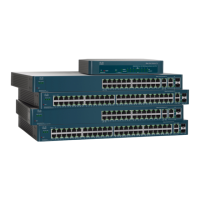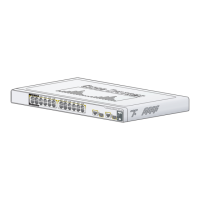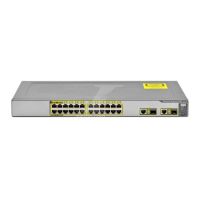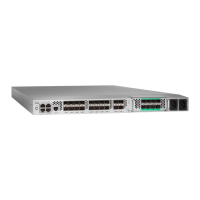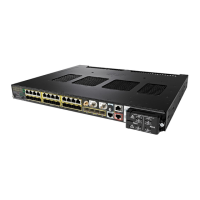IP Configuration
IPv6 Management and Interfaces
Cisco 500 Series Managed Switch Administration Guide 378
18
To define an IPv6 interface:
STEP 1 In Layer 2 system mode, click Administration > Management Interface > IPv6
Interfaces.
In Layer 3 system mode, click IP Configuration > IPv6 Management and
Interfaces > IPv6 Interfaces.
STEP 2 Enter the parameters (in Layer 3).
• IPv6 Link Local Default Zone—(Layer 3 only) Select to enable defining a
default zone. This is an interface to be used to egress a link-local packet
arriving without a specified interface or with its default zone 0.
• IPv6 Link Local Default Zone Interface— (Layer 3 only) Select an interface
to be used as a default zone. This can be a previously-defined tunnel or other
interface.
STEP 3 Click Apply to configure default zone.
STEP 4 Click Add to add a new interface on which interface IPv6 is enabled.
STEP 5 Enter the fields:
• IPv6 Interface—Select a specific port, LAG, loopback interface or VLAN for
the IPv6 address.
STEP 6 To configure the interface as a DHCPv6 client, meaning to enable the interface to
receive information from the DHCPv6 server, such as: SNTP configuration and
DNS information, enter the DHCPv6 Client fields:
• Stateless—Select to enable the interface as a stateless DHCPv6 client. This
enables reception of configuration information from a DHCP server.
• Minimum Information Refresh Time—This value is used to put a floor on
the refresh time value. If the server sends a refresh time option that is less
than this value, this value is used instead. Select either Infinite (no refresh
unless the server sends this option) or User Defined to set a value.
• Information Refresh Time—This value indicates how often the device will
refresh information received from the DHCPv6 server. If this option is not
received from the server, the value entered here is used. Select either
Infinite (no refresh unless the server sends this option) or User Defined to
set a value.
STEP 7 To configure additional IPv6 parameters, enter the following fields:
• IPv6 Address Auto Configuration—Select to enable automatic address
configuration from router advertisements sent by neighbors.
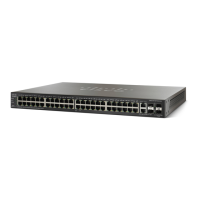
